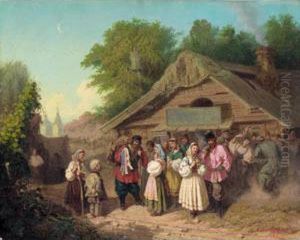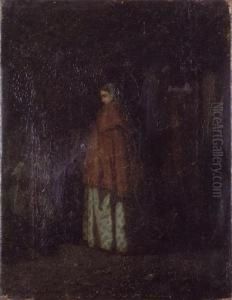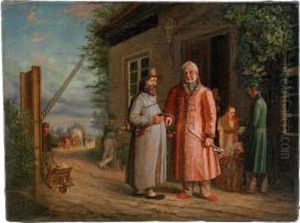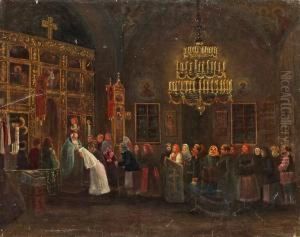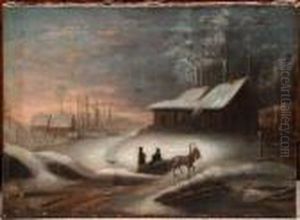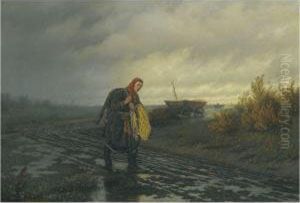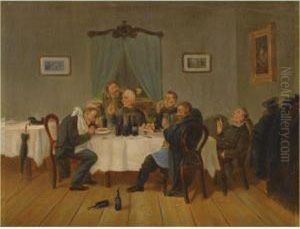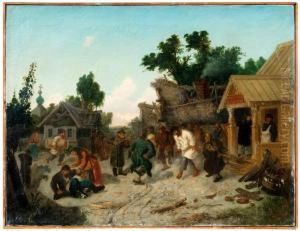Leonid Ivanovic Solomatkin Paintings
Leonid Ivanovich Solomatkin was a 19th-century Russian artist, known primarily for his genre paintings, which depicted scenes of everyday life in Russia with a keen eye for detail and a touch of humor. Born on May 24, 1837, in the town of Kursk, Russian Empire, Solomatkin showed an interest in art from a young age. His early education and influences in the arts are not extensively documented, but he eventually moved to Saint Petersburg to further his training.
Solomatkin studied at the Imperial Academy of Arts in Saint Petersburg, where he honed his skills in painting and received a traditional academic art education. His talent was recognized with several awards, including a silver medal for his work. The Academy was a leading institution for the arts in Russia, providing Solomatkin with a solid foundation in the techniques and disciplines of fine art.
Throughout his career, Solomatkin became known for his genre paintings that often depicted humorous and satirical scenes of Russian society and peasantry. He had a particular gift for capturing the nuances of social interactions and the subtleties of facial expressions. His works are characterized by their narrative quality, inviting viewers to engage with the stories unfolding within the frames. Some of his notable works include 'The Arrival of a Governess in a Merchant's House' and 'Christening in a Provincial Town,' both of which exemplify his talent for storytelling through art.
Despite his success as an artist, there is not an abundance of biographical information readily available on Solomatkin, which may be attributed to the turbulent time in which he lived and the overshadowing prominence of other artists during the era. Nevertheless, his contributions to Russian art have been appreciated by art historians and collectors over the years.
Leonid Ivanovich Solomatkin's legacy lives on through his paintings, which continue to provide insight into the social and cultural life of 19th-century Russia. His works can be found in various museums and private collections, offering a window into the past through the lens of his artistic vision. Solomatkin passed away on March 19, 1905, in Saint Petersburg, leaving behind a body of work that still resonates with audiences today for its charm, wit, and historical value.
